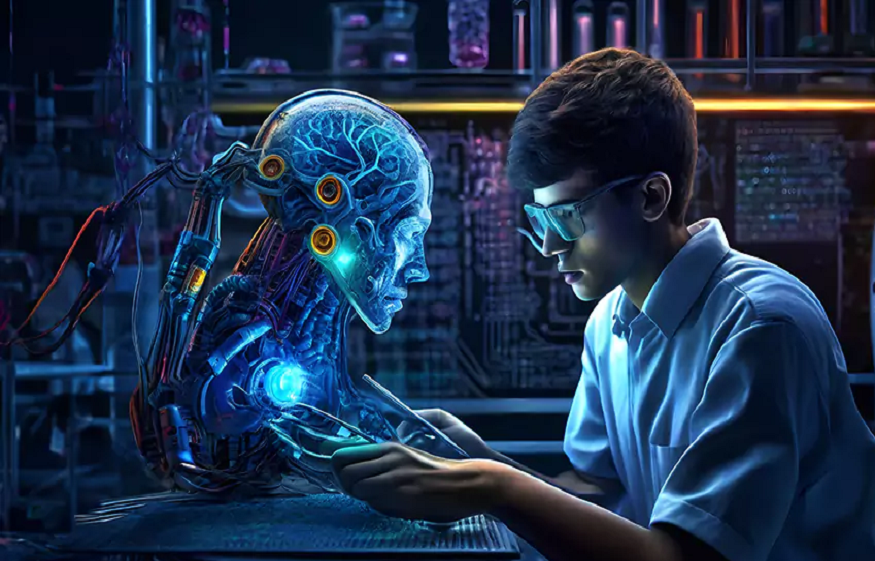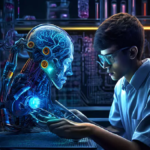
Generative artificial intelligence is revolutionizing industries, enabling creativity, automation, and innovation at an unprecedented scale. This includes generating realistic images, collecting music, reporting code, and automating business processes. These technologies help in reshaping how we work and interact with digital content. The artificial intelligence course fees are kept competitive as all these concepts are embedded within the coursework. Whether you are a tech enthusiast, a developer, or a business leader the comprehension of gen-AI is essential to utilize its potential effectively.
Generative artificial intelligence refers to machine learning prototypes that produce new data similar to what they have been trained on. Besides traditional AI, this focuses on category or projection, generative representatives entirely new contents. This includes images, text, audio, or video. The key technologies behind gen-AI include neural networks. This leverages deep learning approaches and architectures like Generative Adversarial Networks and Variational Autoencoders.
The transformers power large language models like GPTs, and BERT to generate coherent and contextually relevant text. The diffusion models are used in applications like DALL. E and stable diffusion to refine random noise into structured outputs.
Generative AI is driving innovation across industries. This is taught by the generative AI learning courses along with practical training. The aspirants are given to explore different sides of content creation. AI-powered tools like ChatGPT help in forming the backbone of articles, and reports, while tools like Midjourney help in creating high-quality images from textual descriptions. There are even AI prototypes that assist in creating music, and sound effects, and synthesize human-like speech.
In software development, tools like GitHub. Copilot encourages individuals to register code more efficiently. The AI-powered assistant suggests fixes for coding errors in real-time. Businesses and marketers leverage AI-driven chatbots and virtual associates to improve client assistance and automate comebacks. These kinds of personalized transaction explanations generate targeted ad copy, product descriptions, and email campaigns.
The competitive artificial intelligence course fees are due to the inclusion of domains such as pharmaceutical & drug discovery. The gen-AI is highly responsible for improving diagnostics. This is done via high-resolution medical images and assists in drug development through protein structure medical prototypes like AlphaFold.
In the gaming & simulation industry, the AI-produced characters and environments create immersive experiences. On the other hand, the simulations, help in exercise pilots, surgeons, and engineers. The impact of generative artificial and its applications restart to develop as technology advances.
If you are looking to create your own generative AI models, the path is to do it stepwise. The first step involves selecting the right framework like TensorFlow, Pytorch, etc. Next is data collection, and preprocessing is crucial. It ensures effective model performance. Data augmentation techniques like noise injection, and transformation, help in improving robustness. Model training and fine-tuning need usage of pre-trained prototypes, and acclimating them for domain-specific applications via transfer knowledge.
Finally, deployment and integration need cloud platforms like AWS, Google Cloud, or Azure for transformable AI deployment. The APIs and SDKs are required to integrate AI capabilities into applications.
Bias mitigation needs training in artificial intelligence on diverse data sets. The transparency of this procedure ensures that users apprehend how AI-generated content is leveraged. Future trends in this technology include multimodal artificial intelligence. This blends text, images, and audio, in unified models. AI-augmented creativity enables tools to assist rather than replace human creativity, regulation, and responsible AI. This is due to the government and organizational policies establishing guidelines for ethical AI use.
These courses strongly emphasize domain-specific upskilling. Besides, teaching the theoretical concepts, the learners are continuously exposed to the real-world case studies of the specific domains. This makes it easier to understand the problem and improvise the generative AI design as per the requirements of the industry. The reputed institutions offering these courseworks recruit experienced industry professionals to provide their working insights during the conduct of the coursework. They also give guidance on how to prepare a resume, conduct mock interviews, and review LinkedIn profiles for the effective positioning of the learners in front of the global recruiters.
Conclusion
The generative AI learning courses fulfill the need for skilled professionals in diverse industrial segments. For this reason, the training given during the curriculum is not only limited to the tech concepts, rather the applications of these technologies in the different domains are also administered. Plus, the aspirants learn to innovate, create solutions, and design gen-AI models in their hands-on training. This also helps individuals carve out the most wanted profiles for job hunters.













Leave a Reply
You must be logged in to post a comment.